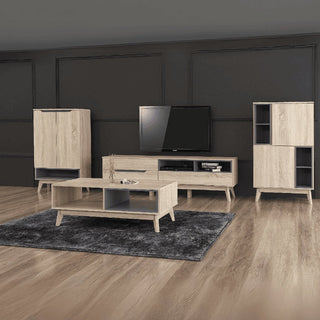In today’s fast-paced work culture, productivity and well-being are crucial factors that determine the success of both employees and businesses. While companies invest in technology, training, and incentives, one often overlooked aspect is the office furniture itself. Thoughtfully designed office furniture can significantly enhance focus, comfort, and efficiency, leading to improved performance and overall job satisfaction.
But have you ever wondered why working from a well-furnished office feels so much better than trying to be productive from a cluttered living room with a sofa that’s too comfortable? The right office setup isn’t just about aesthetics—it directly impacts physical health, mental well-being, and work efficiency.
In this article, we’ll explore how office furniture, from ergonomic chairs to well-placed storage solutions, affects employee performance and happiness. Plus, we’ll discuss how elements from other areas of the home—such as the living room, bedroom, and kitchen—can inspire better office designs.
1. The Science of Ergonomic Office Furniture

Why Ergonomics Matters
Ergonomics refers to designing furniture and workspaces that support proper posture and movement. Poorly designed office furniture can lead to health problems like back pain, carpal tunnel syndrome, and eye strain, which all contribute to decreased productivity.
Must-Have Ergonomic Office Furniture
-
Adjustable Chairs: A well-designed chair with lumbar support prevents back pain and encourages better posture.
-
Sit-Stand Desks: Alternating between sitting and standing keeps the body active and reduces strain.
-
Proper Desk Height: Desks should be at a comfortable height to prevent strain on the wrists and shoulders.
-
Monitor Stands: Keeping your monitor at eye level prevents neck strain.
A comfortable workstation allows employees to work longer with fewer distractions and discomforts. Just as a sofa in the living room is designed for relaxation, an office chair should be designed for optimal support and focus.
2. Office Aesthetics and Productivity

The Role of Colours
Colours influence mood and energy levels. Studies suggest that certain colours can boost productivity and creativity.
-
Blue and Green: Promote calmness and focus, making them ideal for workspaces.
-
Yellow and Orange: Stimulate creativity and enthusiasm but should be used in moderation.
-
Neutrals (Gray, White, Beige): Provide a professional and modern feel, reducing distractions.
Lighting: Natural vs. Artificial
Natural light improves mood, reduces stress, and enhances focus. If an office lacks sufficient natural light, adjustable LED lamps can help mimic daylight and reduce eye strain.
Bringing Home Comfort to the Office
Think about the comfort of your bedroom—a high-quality mattress and a sturdy bed frame ensure restful sleep. Similarly, an office should have a balance of comfort and support. Soft seating areas with a coffee table can create collaborative spaces where employees feel relaxed yet engaged.
3. Organisation and Storage Solutions

A cluttered workspace can reduce productivity and increase stress. Office furniture should include ample storage options to keep the space tidy and functional.
-
Filing Cabinets and Drawers: Help organise paperwork and supplies efficiently.
-
Storage Beds for Small Offices: If you’re setting up a home office in a multipurpose space, consider a storage bed that doubles as a workspace.
-
Shelving Units: Keep reference materials, office supplies, and personal items organised.
-
Cable Management Systems: Reduce visual clutter and create a cleaner look.
Just as a TV console in the living room helps manage electronics neatly, well-planned office storage ensures a clutter-free workspace that boosts efficiency.
4. The Impact of Office Layout

Open vs. Private Workspaces
The office layout significantly affects collaboration and individual focus. Open layouts foster teamwork and idea-sharing, while private workstations help with deep-focus tasks. Modern offices often integrate both styles with modular furniture that can adapt to different needs.
Flexible Workspaces
Modular office furniture, similar to the adaptable design of kitchen cabinets, allows businesses to reconfigure their spaces easily. Employees should have the flexibility to personalise their workstations to maximise comfort and efficiency.
5. The Psychological Benefits of a Well-Designed Office

Reduced Stress and Burnout
A well-furnished office can significantly impact mental well-being. Comfortable seating, plants, and well-lit spaces help reduce anxiety and create a pleasant work environment.
Increased Motivation and Job Satisfaction
Employees who feel comfortable in their workspace tend to be more engaged and motivated. Investing in high-quality furniture demonstrates that a company values its employees, leading to increased morale and loyalty.
Conclusion
Office furniture is more than just décor—it’s a fundamental element that influences productivity, comfort, and well-being. By choosing ergonomic chairs, optimising lighting, using effective storage solutions, and incorporating home-like comfort, businesses can create work environments that promote efficiency and happiness.
Whether designing a corporate office or setting up a home workspace, investing in high-quality office furniture is essential. Just as a comfortable mattress ensures good sleep or a stylish TV console enhances the living room, the right office setup can transform the way people work, making them healthier, happier, and more productive.
Looking for the perfect office furniture? Check out Megafurniture for high-quality, ergonomic, and stylish options!








